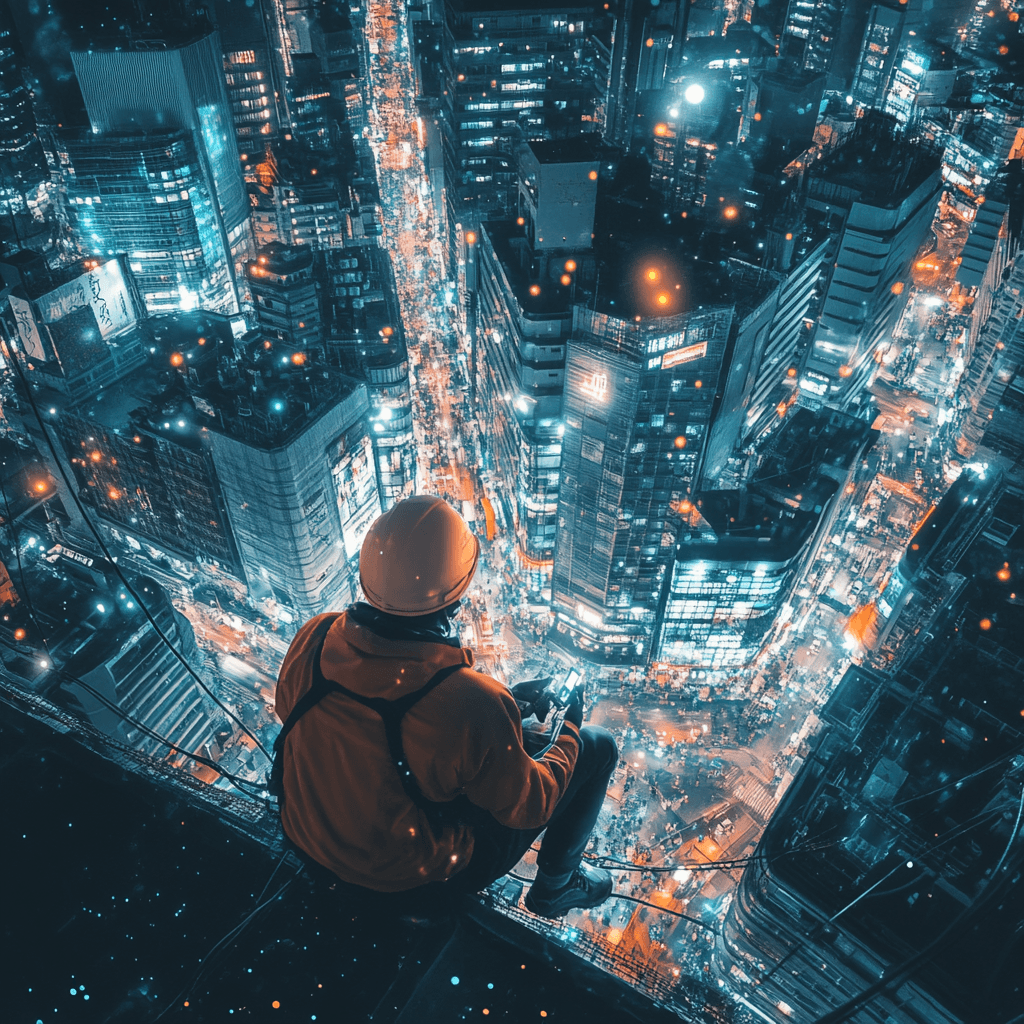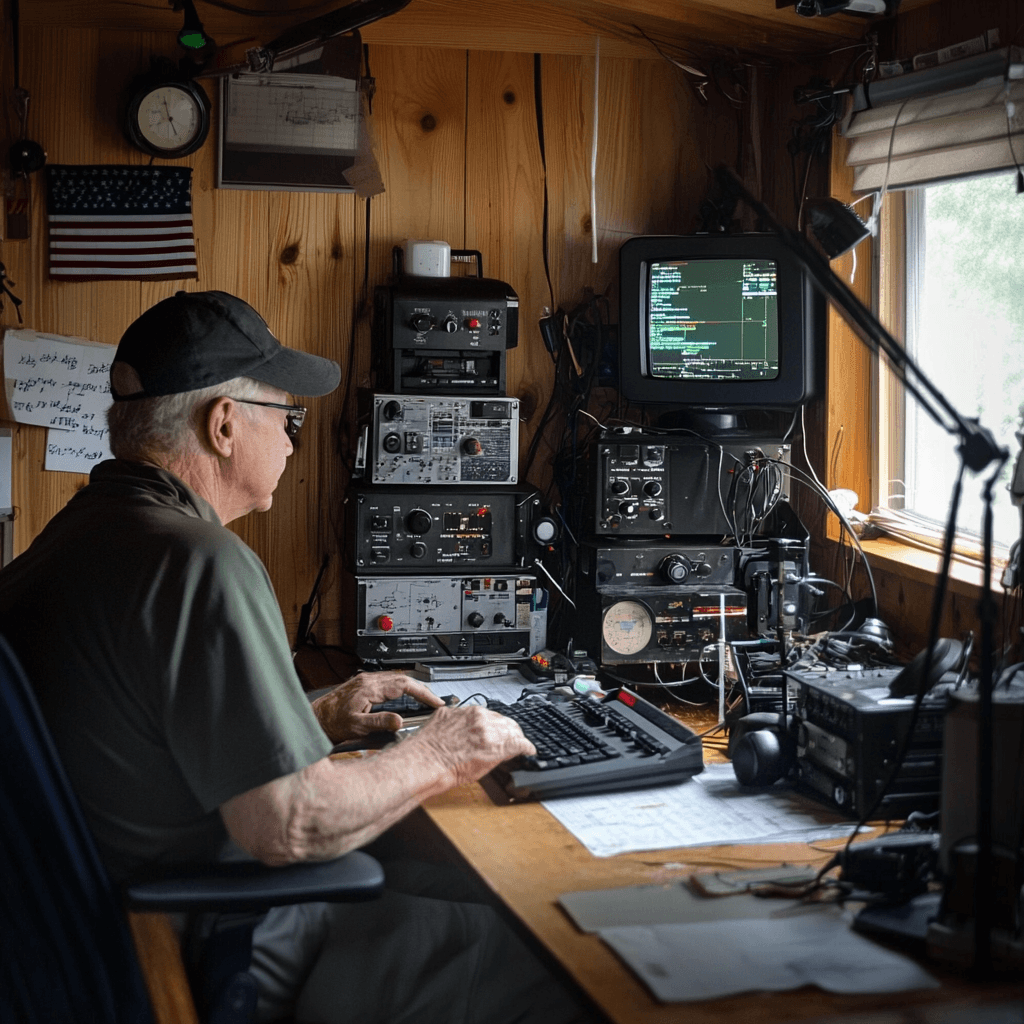
When disaster strikes, your smartphone might become nothing more than an expensive paperweight. Natural disasters, power outages, and infrastructure failures can leave us scrambling to connect with loved ones and access critical information. As someone who's weathered multiple hurricanes in Florida, I've learned firsthand that having reliable off-grid communication tools isn't just about convenience—it's about survival.
Understanding Off-Grid Communication Basics
The term "off-grid communication" might sound technical, but it simply means being able to send and receive messages without relying on traditional infrastructure like cell towers or the power grid. Whether you're a seasoned prepper or just starting to think about emergency preparedness, understanding your options can make all the difference when conventional systems fail.
Building your knowledge of wild resources can complement your emergency communication plan—explore essential plant identification techniques here.
Equip yourself with Grid Doctor 3300 EMP, a guide to protecting your communication systems and preparing for prolonged blackouts.
Essential Off-Grid Communication Tools

Prepared for any storm: Weather radio essentials.
Two-Way Radios: Your First Line of Defense
Two-way radios remain one of the most reliable forms of emergency communication. The Motorola T470 stands out for its durability and clear transmission, offering a range of up to 35 miles in optimal conditions. While actual range varies significantly based on terrain and obstacles, these radios excel in local communication scenarios.
Key features to look for in two-way radios:
- Water resistance
- Long battery life
- NOAA weather alerts
- Multiple channels
- Privacy codes
Weather Radios: Your Link to Critical Updates
Emergency weather radios like the Midland ER310 provide crucial updates during disasters. These devices access NOAA's dedicated weather channels, delivering real-time alerts and updates even when other systems fail. Look for models with multiple power sources—hand crank, solar, and battery backup ensure you'll never miss critical information.
Satellite Communicators: When All Else Fails
For true off-grid reliability, satellite communicators like the Garmin inReach Mini 2 provide global coverage. These devices offer:
- Two-way text messaging
- SOS functionality
- GPS tracking
- Weather forecasts
- Location sharing
While the monthly subscription fees might seem steep, the peace of mind they offer during emergencies is invaluable.
Reliable fire-starting tools go hand-in-hand with effective communication during emergencies—learn bow drill fire-making techniques here.
Stay prepared with BlastProof, a comprehensive guide to emergency communication and off-grid survival.
Building Your Emergency Communication Plan
Having the right equipment is only half the battle. A solid emergency communication plan ensures everyone knows what to do when crisis strikes.
A solid communication plan works best when paired with a resilient survival mindset—explore psychological survival strategies here.

Reliable connections in unreliable times.
1. Establish a Communication Hierarchy
Create a clear order of communication methods:
- Primary: Cell phones/texting
- Secondary: Two-way radios
- Tertiary: Satellite devices
- Last resort: Pre-arranged meeting points
2. Designate an Out-of-Area Contact
Choose a contact who lives far from your local area. During regional disasters, long-distance calls often work when local calls fail. This person can serve as a central point of contact for your family.
3. Practice and Maintain
Regular practice sessions help familiarize everyone with the equipment and procedures. Monthly checks should include:
- Testing all devices
- Replacing batteries
- Updating emergency contacts
- Reviewing meeting points
- Checking subscription services
Prepare comprehensively with the Final Survival Plan, a guide to navigating disasters with effective communication plans.
Advanced Communication Options

Mesh networks: Communication for tight-knit groups.
Ham Radio: The Ultimate Communication Tool
While requiring a license, ham radio offers unparalleled flexibility and range. The Yaesu FT-70DR provides digital capabilities and extensive coverage, making it a favorite among serious preparedness enthusiasts. The licensing process itself provides valuable knowledge about radio operation and emergency protocols.

Mastering long-range communication: The power of ham radio.
Mesh Networks: Creating Your Own Infrastructure
Devices like the goTenna Mesh (currently not available) enable users to create local communication networks independent of traditional infrastructure. These systems allow text messaging and GPS location sharing within a limited range, perfect for coordinating with nearby family members or neighbors during emergencies.
Situational awareness is crucial when relying on advanced communication tools—enhance your skills here.
Emergency Communication Apps and Services
While not truly "off-grid," several apps can enhance your communication capabilities when cell service is spotty but not completely down:
- Zello: Turns your phone into a walkie-talkie
- FireChat: Enables mesh networking between phones
- Signal: Provides encrypted communication
- What3words: Helps share precise locations using just three words
Staying connected relies on reliable power sources—discover off-grid energy solutions here.
The Role of Social Media in Crisis Communication
Social media platforms can serve as valuable information sources during emergencies, but they shouldn't be your only plan. When infrastructure partially remains, platforms like Twitter often become crucial sources of real-time updates and community organization.
Conclusion: Being Prepared Means Being Connected
Off-grid communication isn't just about having the right gear—it's about understanding how to use it effectively and having a plan in place before you need it. Start with the basics: a good weather radio and some two-way radios. As your knowledge and needs grow, consider adding satellite communication devices or pursuing a ham radio license.
Learn to create sustainable systems with Grid Doctor 3300 EMP, ensuring your family’s communication and survival during societal collapses.
Remember, the best emergency communication system is the one you have with you and know how to use. Regular practice and maintenance ensure your equipment and skills will be ready when you need them most.
AATF Survival does not agree with all the statements provided in the given content.
Your source for expert survival strategies and emergency preparedness tips.
Privacy policy | Terms of use | Cookies




